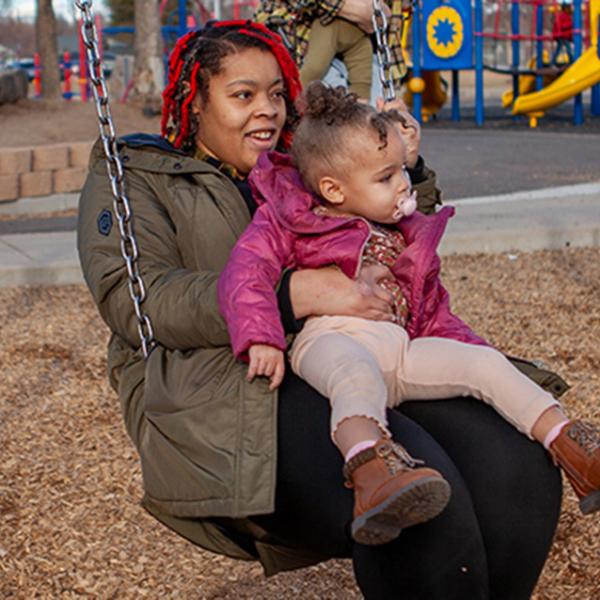More Coloradans are feeling the consequences of an expensive housing market and a rollback in aid for people facing eviction.
In 2023, 7.1% of Coloradans worried they would not have stable housing in the next two months. That was up from 5.6% in 2021.
Housing instability overwhelmingly affects renters. Nearly 17% of renters worried about having a place to live, compared with 2.4% of homeowners.
Just like insurance coverage, housing instability shows the effects of state and federal policy during the pandemic. Government helped people to pay their rent and made it harder for landlords to evict tenants. But those policies are mostly gone, and the consequences show up in the CHAS data.
Since 2019, the CHAS has asked people if they were worried about having a place to live in the next two months. The 2023 survey included a new question about troubles Coloradans had paying their rent or their mortgage in the past year. Some 12.7% reported this problem, representing over 713,000 people. Taken together, these two questions show that many Coloradans are having a hard time affording a place to live.
Ethnic disparities. Housing instability does not impact all Coloradans equally. In 2023, Hispanic or Latino Coloradans were more likely to report experiencing housing affordability issues than white Coloradans. See CHI's Statement on Health Disparities for reasons for these differences.
A rural and urban issue. People in northeast Colorado and Pueblo had the hardest time paying their rent or mortgage in 2023. Other hotspots for affordability issues include the central and eastern Denver metro area, the San Luis Valley, and the mountain resort communities — three very different areas with a common problem.
The mental health toll of housing fears. Housing instability takes a heavy mental toll. Those who were housing unstable were nearly three times as likely to report poor mental health than those who were housing stable. The disparities are similar for physical health. Those who experienced housing instability were nearly four times as likely to report fair or poor general health than people who did not struggle with housing stability.
It's not just about poverty. Even well-off Coloradans had a hard time affording housing in 2023. More than 18% of people who earned three to four times the federal poverty level said they had difficulty paying their rent or mortgage. (This group includes families of four with incomes between $90,000 and $120,000 a year). That’s about the same rate as Coloradans with poverty-level incomes. Troubles paying the rent or mortgage only fell below 10% for the survey’s highest income group — those making more than four times the poverty level. This suggests that official measurements of poverty do not reflect people’s day-to-day struggles in Colorado’s expensive housing market.

